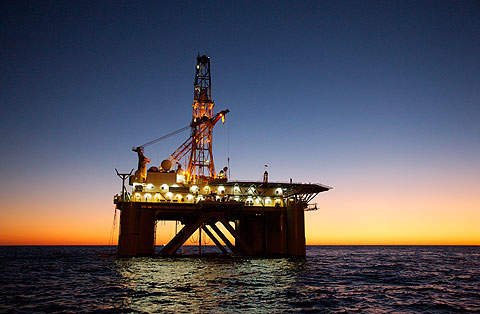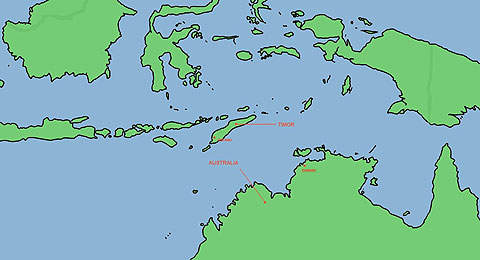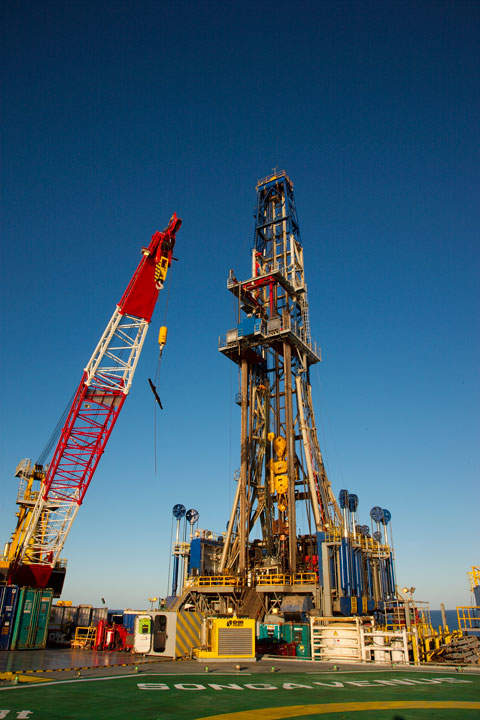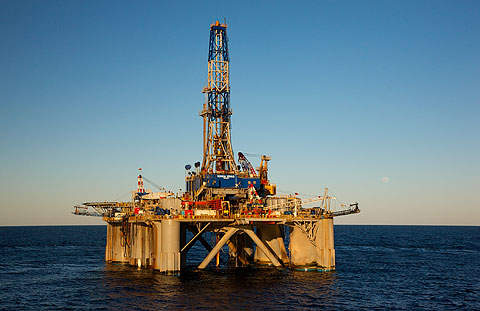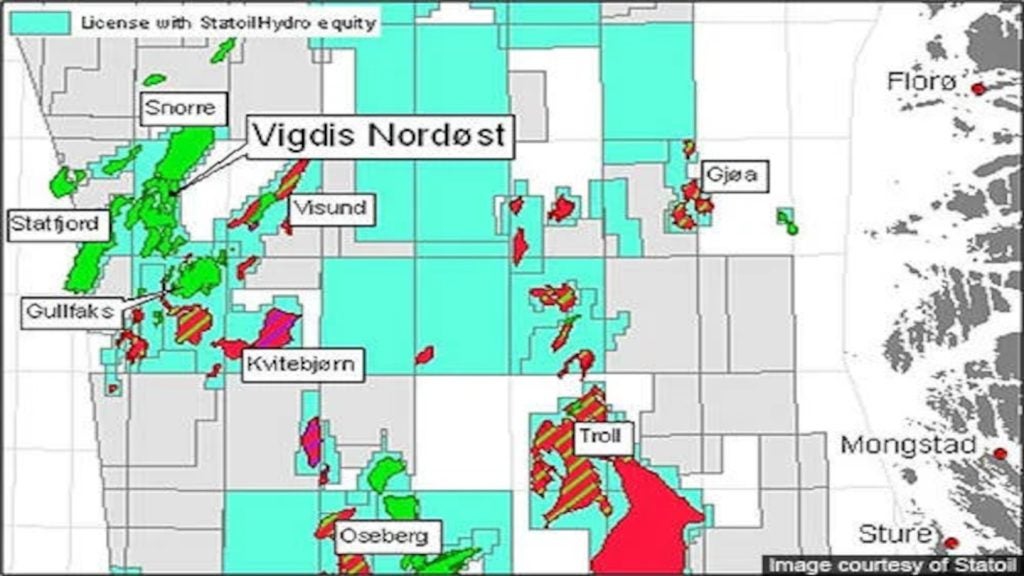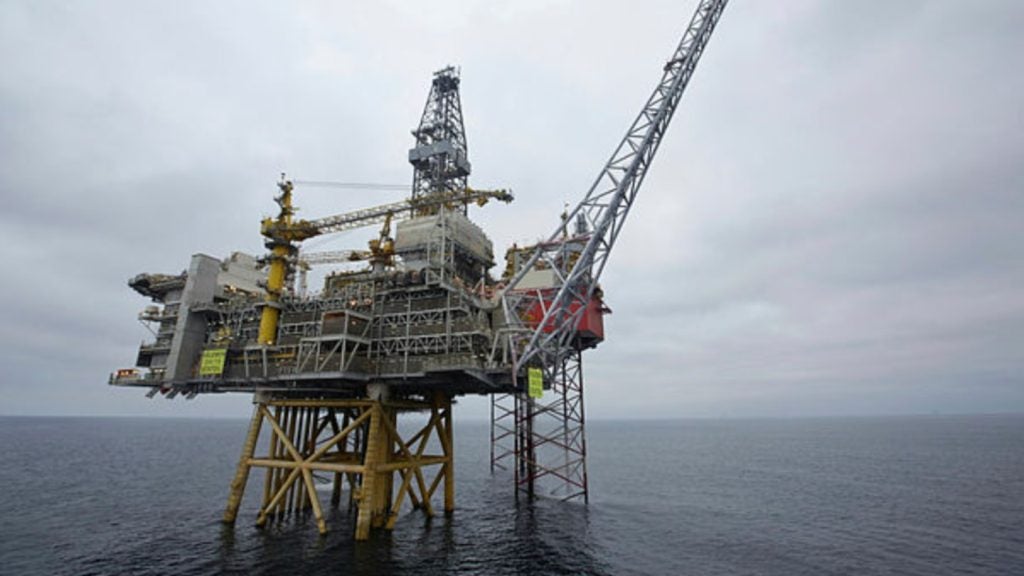The Kitan oilfield is located at a water depth of 350m in the Joint Petroleum Development Area (JPDA) in the Timor Sea, offshore 170km southeast of Timor-Leste coast and 550km northwest of Darwin, Australia.
The Kitan field was discovered in 2008. Eni is the operator with a 40% interest, while its joint venture partners Inpex has 35% and Repsol subsidiary Talisman Resources has 25%.
The reservoir is approximately 3,300m below the seabed. The field’s reserves are estimated to be in the range of 30-40 million barrels of oil. Eni and partners took the final investment decision on the project in January 2010. The field development plan was submitted to National Petroleum Authority of Timor-Leste in May 2009 and was approved in April 2010.
First oil from the field flowed in October 2011. The field achieved its peak production rate of 45,000bopd in 2012.
Kitan oilfield location
The oil field is located in the northern Bonaparte Basin of Timor Sea and lies in the production sharing contract (PSC) 06-105 of JPDA.
JPDA is jointly controlled by Democratic Republic of Timor-Leste and the Commonwealth of Australia, and is regulated by Petroleum Safety Authorities (PSA).
Kitan oilfield development
Kitan oilfield has three subsea wells connected to Bluewater Glas Dowr FPSO. The subsea well heads and flowlines were installed to carry reservoir fluids from the wells to the FPSO.
The field development started in April 2010. Eni acquired its share and operatorship in the permit in September 2007 while Intex acquired the same in 1992. Initial exploration resulted in the oil discovery in the Jahal Structure (1996) and Kuda Tasi Structure (2001). The field’s first oil discovery over the field was made by Eni in March 2008.
The discovery was made by exploration well Kitan-1, which was drilled by Songa Venus semisubmersible rig to a total depth of 3,568m. The initial test result reported the flow rate at 6,100bopd. The data was further interpreted for evaluating the potential dimension of the discovery.
The discovery strengthened the regional presence and growth opportunities for Eni and its joint venture partners in the field development.
Drilling of appraisal well Kitan-2 was completed in March 2008 and proved the presence of a potential commercial oil accumulation. In June 2008, the development of the area was approved by Timor Sea Designated Authority (TSDA) as the discovery was confirmed as commercial.
Glas Dowr FPSO
Eni gave the letter of award for chartering, operation and maintenance of the Glas Dowr upgraded FPSO for the project in January 2010 to Bluewater, for the operation and maintenance of the FPSO.
Mooring system facilities, along with logistics and ancillary services associated with the FPSO, was also provided by Bluewater.
Glas Dowr is designed, built and operated by Bluewater. The fifth among the FPSOs designed by the company, Glas Dowr, became operational in August 1997.
The vessel is 241.77 long, 42m wide and has a deadweight tonnage of 94,800dwt. The deck area covers 7,985m² and it can provide accommodation for up to 96 people. The vessel has fluid processing capacity of 75,000bpd and crude production capacity of 60,000bopd.
Songa Venus rig
The semisubmersible drilling unit Songa Venus is owned by Songa Offshore AS. The rig was built in 1975 by Bethlehem Steel Corporation. It was designed based on the F&G L-900.
The rig is 260ft wide and 217ft long and can operate at water depth up to 1,500ft. Its maximum drilling capacity is 25,000ft and it can accommodate 110 people.
Contracts involved
The contract for the manufacture and supply of subsea equipment for the field was awarded to FMC Technologies in June 2009.
The contract work included the supply of three subsea production trees and all related control systems and umbilicals. The value of the contract amounted to $60m.
Technip won a subsea contract for the field in May 2010. The scope of work included the supply and installation of 23km of flowlines and risers, and three umbilicals. The company’s construction vessel Venturer was used for carrying out the installation works.
Sembawang Shipyard received a contract from Bluewater in September 2010 to upgrade the internal turret mooring and transfer systems of Glas Dowr FPSO.

